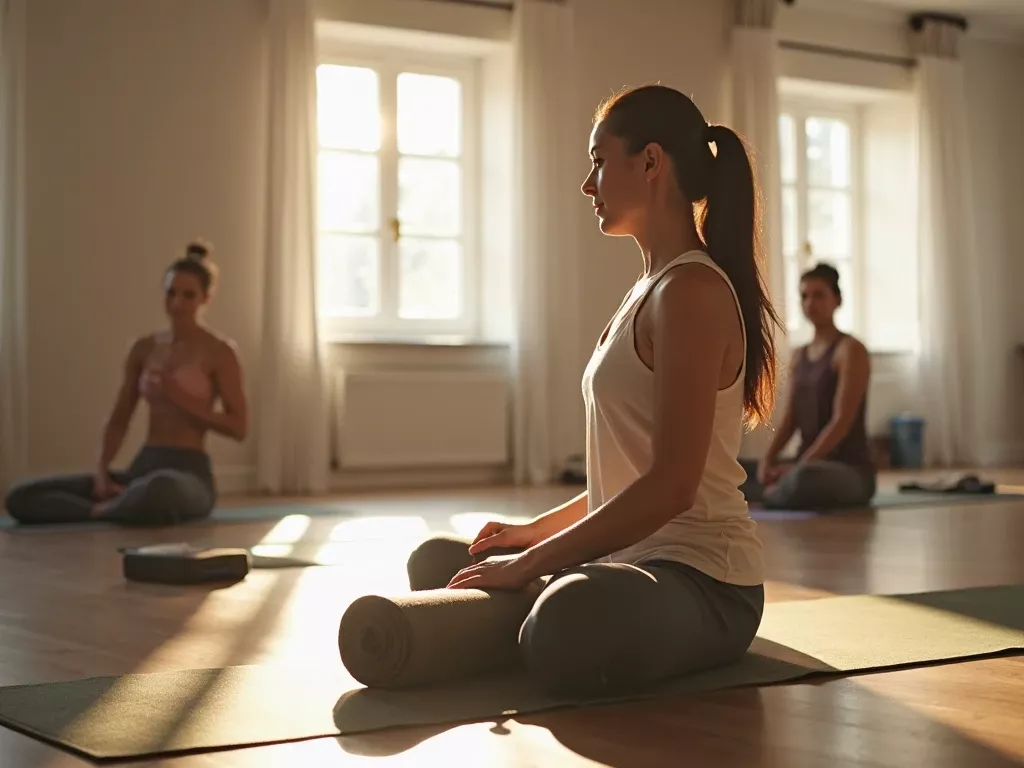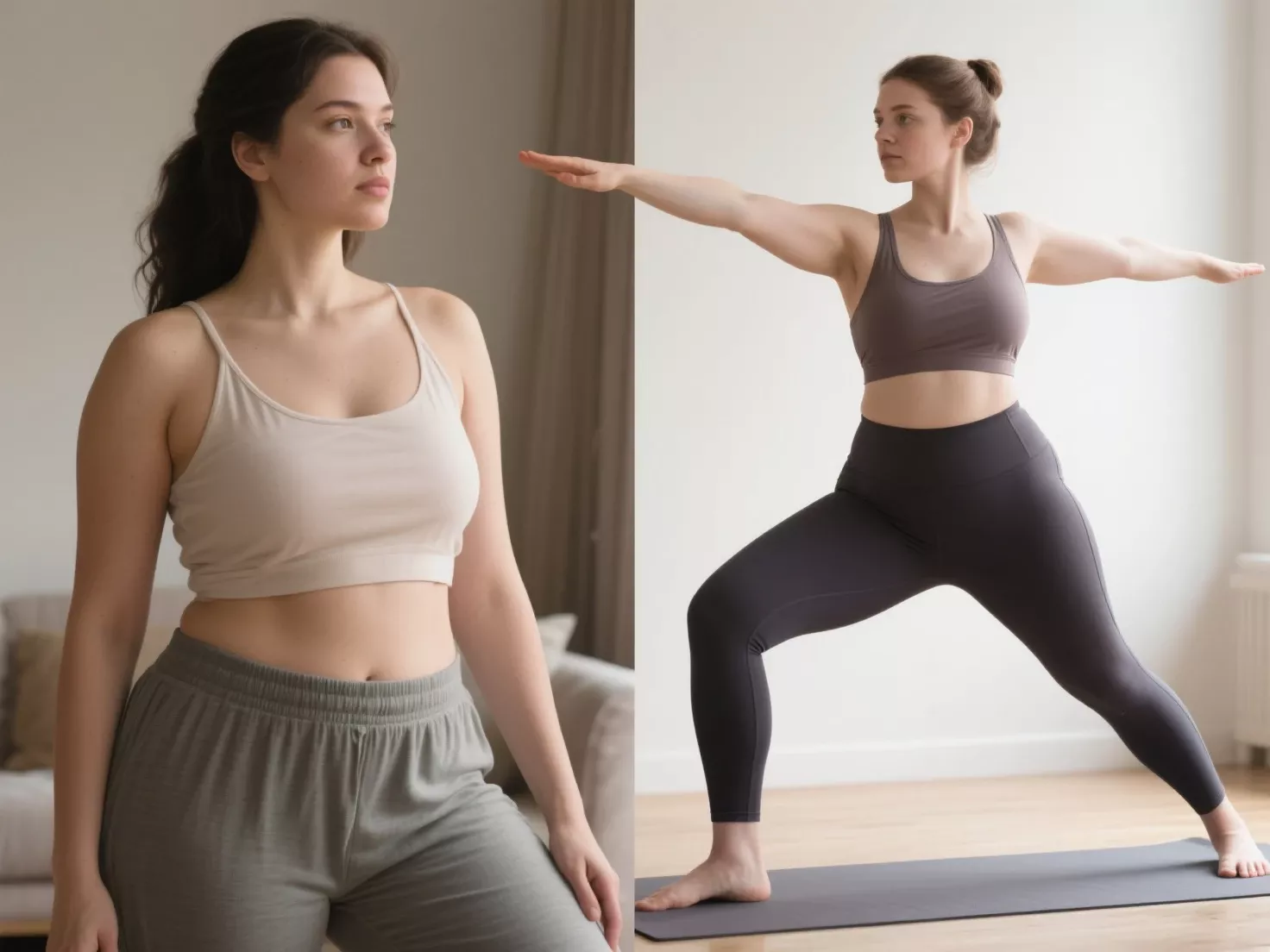Yoga is more than just physical movement — it’s a practice that fosters mindfulness, self-awareness, and connection.
As such, it carries with it certain traditions, cultural practices, and unspoken rules of etiquette.
One common concern among yoga students, especially beginners, is whether it’s considered rude or disrespectful to leave class early, particularly before Savasana (the final resting pose).
The short answer? It’s not inherently rude to leave a yoga class early — but how and why you leave matters greatly.

The intention, awareness, and method behind your departure determine whether it’s a respectful decision or a disruptive one.
In this detailed article, we’ll explore:
-
Why some instructors and students value staying until the end
-
When it’s okay to leave early
-
How to leave a class gracefully
-
Cultural and spiritual reasons for yoga etiquette
-
A practical guide to making mindful decisions in yoga spaces
🧘 Why the End of a Yoga Class Is So Important
The closing portion of a yoga session, especially Savasana (also known as corpse pose), is not just a cooldown — it’s a critical part of the entire experience.
It’s where your body and nervous system integrate the benefits of the practice. Savasana allows the practitioner to:
-
Mentally reset and return to balance
-
Enter a state of deep relaxation
-
Process emotional shifts
-
Reflect on inner awareness and stillness
Yoga instructors often emphasize that Savasana is the most important pose of the class, even though it involves no movement.
In fact, some traditions believe that the entire practice builds toward this moment of stillness, where body, breath, and mind align in harmony.
Leaving before Savasana, therefore, may feel — to some — like walking out during the final chapter of a meaningful story.
⏰ Reasons Why Someone Might Leave Early
Despite its importance, real life doesn’t always align with a yoga schedule.
There are many valid, understandable reasons someone may need to exit class early:
-
Work commitments or a strict morning routine
-
Childcare duties
-
Health concerns like dizziness, nausea, or exhaustion
-
Emotional overwhelm, especially in deep or trauma-informed yoga classes
-
Transportation limitations
-
Attending a longer class unintentionally
In these cases, most yoga teachers and fellow practitioners are empathetic — as long as the departure is handled respectfully.
✅ How to Leave a Yoga Class Early — the Right Way
If you must leave a class before the end, here are best practices to do so without disturbing the sacred space of others:
1. Let the Instructor Know in Advance
Before class begins, quietly inform the teacher:
“I may need to leave a few minutes early today — is there a time you recommend I step out?”
This shows consideration and allows the teacher to guide you to exit at an appropriate point, such as before Savasana or during a transition.
2. Choose a Spot Near the Exit
Set your mat near the door or back of the room to avoid walking across others’ mats or drawing attention during your departure.
3. Time Your Exit Mindfully
If possible, leave before Savasana begins, ideally after the last active sequence or during seated poses. Avoid leaving during chanting, breathwork, or meditation.
4. Exit Quietly and Calmly
Gather your things silently. Avoid conversations, loud zippers, or noisy bags. Move mindfully — just as you would in a yoga pose.
5. Offer a Gesture of Gratitude
If appropriate, a simple bow or quiet “Namaste” to the teacher as you leave expresses respect, even in your absence.
📿 Yoga Etiquette and Cultural Considerations
Yoga comes from a rich spiritual and cultural tradition rooted in Indian philosophy, where respect for the practice, the teacher (guru), and the space (shala or studio) is important.
Walking out mid-practice, particularly without a reason or explanation, can sometimes be perceived as disrespectful to that lineage — not just to the instructor or class.
In modern Western settings, etiquette varies, but these deeper values still resonate with many experienced teachers and practitioners.
😌 What if You Dislike Savasana?
Interestingly, some students leave early not because of a tight schedule — but because they’re uncomfortable with stillness.
This is more common than you might think. Lying down, eyes closed, in a dark room with silence can bring up anxiety or restlessness.
If this is the case, consider:
-
Modifying Savasana (e.g., seated meditation or supported rest)
-
Practicing at home to build tolerance for stillness
-
Speaking with your instructor privately — they may offer alternatives
“Sometimes, the pose you resist the most is the one you need the most.”

🙋♀️ Common Questions
Is it okay to leave early every time?
Not ideal. If you know you’ll always need to leave early, consider shorter classes (30–45 minutes) or online options you can control from home.
Will the teacher be offended if I leave?
Most won’t be, especially if you’re polite and respectful. Teachers understand life outside the mat — and a good yoga teacher practices non-judgment, too.
What if I feel emotionally overwhelmed and need to leave quickly?
It happens. Yoga can unlock strong emotions. If you’re overwhelmed, quietly gather your things and go.
You can always follow up with the teacher later if you want to explain.
🌟 Final Thoughts: Respect Your Practice — and Others’
Leaving yoga early isn’t necessarily rude — it’s about how you do it. Yoga teaches self-awareness, empathy, and intention.
If you must leave class early, do so mindfully, respectfully, and with an understanding of the environment you’re part of.
Think of a yoga class as a shared sacred space. Everyone is there to heal, grow, or simply breathe.
By honoring that space — even in your absence — you embody the true spirit of yoga.
“Yoga isn’t about staying longer. It’s about showing up with sincerity — even if just for a moment.”



